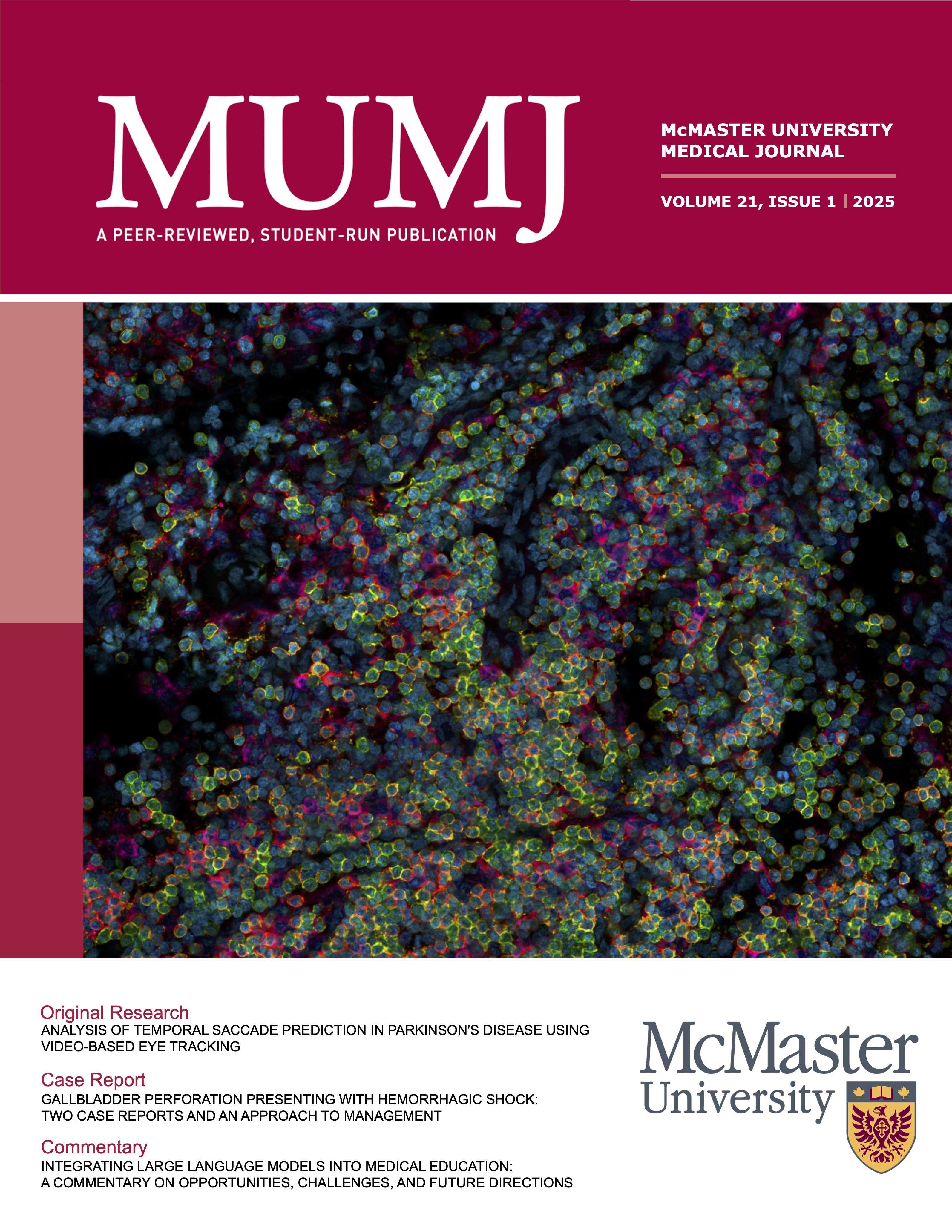A Short Scientific Review of Oropharyngeal Squamous Cell Carcinoma
DOI:
https://doi.org/10.15173/mumj.v21i1.3631Keywords:
Head and Neck Cancer, HPV, Radiation Therapy, Computed Tomography, Cisplatin, EpidemiologyAbstract
Oropharyngeal Squamous Cell Carcinoma (OPSCC) is the cancer of the squamous cell in the oropharynx. OPSCC accounts for nearly over 450,000 cases worldwide in 2023, and its incidence is one of the most rapidly increasing amongst all other cancers (1). OPSCC may be categorised based on its association with the Human Papillomavirus (HPV). When labelled as HPV-positive (HPV+) OPSCC, it indicates that the presence of the HPV is a key driver in the carcinogenesis of OPSCC. Conversely, HPV-negative (HPV-) OPSCC means that the carcinogenesis is not driven by the HPV. The majority of OPSCC cases are HPV+, with 70% of these being caused by the HPV16 strain (2). The remaining OPSCC cases are HPV- and often have worse prognoses than HPV+ cases (3). The disease has a moderate genetic susceptibility, and risk factors of OPSCC include race, gender, age, sexual health, alcohol and tobacco usage, as well as HPV vaccination status (4,5). The industry standard for imaging OPSCC is through computed tomography (CT), allowing for high-resolution images of the oropharynx, neck, and surrounding areas (6). Imaging, in conjunction with a biopsy, will confirm the presence of OPSCC, and a p16 immunohistochemistry test will confirm the HPV-positivity of the tumor (5). When OPSCC is diagnosed in early stages, it may only require a single modality for treatment (7).7 However, OPSCC is often diagnosed in late stages due to its asymptomatic nature and consequently requires a multimodality approach to treatment (7). OPSCC treatment may involve a multifaceted approach, including Intensity-Modulated Radiation Therapy (IMRT) for targeted radiation, cisplatin-based chemotherapy, and surgical interventions (8–10). To determine the optimal dosage of IMRT, cell survival curves of OPSCC were constructed based on literature values.


